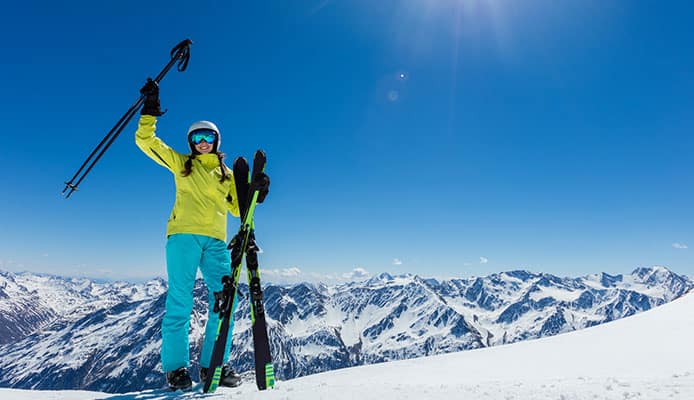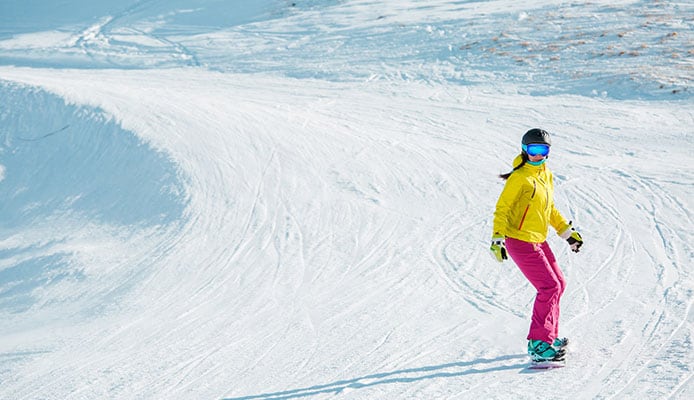
Whether you are a regular on the mountain or are just getting started, winter is the season that gets skiers excited to hit the slopes. While skiing is fun, listening to sounds of wind and snow isn’t exactly thrilling. But with music, you can jam to your tunes and get in rhythm with your turns. A great way to incorporate your music on the slopes is to use a pair of headphones for ski helmets.
However, not all headphones are suitable for use with your ski helmet. Ski helmet earphones have a specific profile, which allows them to integrate into the lining of your helmet. The best wireless headphones for ski helmets won’t cause any discomfort. Additionally, a pair of headphones for ski helmets can’t have audio that is too loud, or you won’t be able to listen to instructions or hear potential warnings. To help you get started in your search, we have found the eight best ski helmet headphones. All of these designs are of high quality and have great audio, so you can get back on the mountain and take your favorite playlists with you.
OUR TOP PICK
JayBird X3 Bluetooth
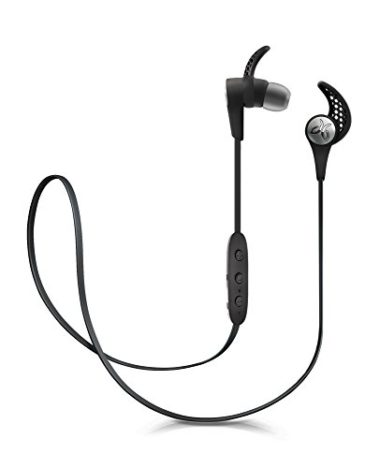
- Stand Out Features - Why We Love It
- Silicone ear fins provide a secure fit
- Locking mechanism ensures no readjustments are required on the slopes
- Moisture-resistant design is safe for sweat, snow, and rain
- Hydrophobic nano-coating reduces moisture damage
- Wireless design uses Bluetooth technology
- Headphones have an 8-hour battery for a full day of music
- Jaybird app lets you customize your sound
- Compact and comfortable
- Perfect for listening to music while skiing
Product Dimensions: 21.5 x 0.5 x 0.9 inches
Weight: 0.48 ounces
Headphone Fit: In-the-ear
Proofing: Moisture resistant
App: Jaybird
Special Feature: Microphone
Color: Blackout
EDITORS CHOICE
UClear Digital Pulse Wired
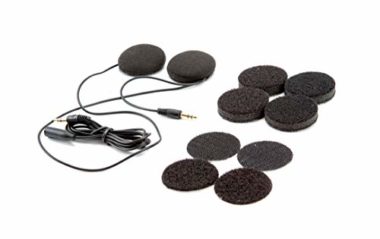
- Stand Out Features - Why We Love It
- High fidelity audio offers an excellent performance
- Can be easily transferred between helmets
- Universal fit is comfortable for all riders
- 3.5mm audio jack makes sound crisp and clear
- Strong bass and exceptional performance
- Installation mount set included to secure headphones in the lining
Product Dimensions: 6.5 x 3 x 1 inch
Weight: 2.88 ounces
Headphone Fit: Wrap around
Proofing: Not specified
App: No
Special Feature: Installation mount set
Color: Black
BEST VALUE
Outdoor Tech Wired Chips Ski Helmet Headphones
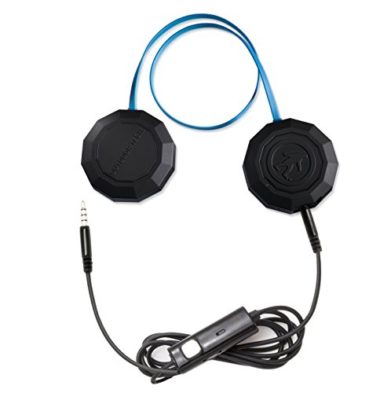
- What Makes These Helmet Speakers For Skiing Stand Out
- Universal fit and wired design are compatible with a variety of helmets
- Easily tucks into the audio-ready liner
- Slim design is comfortable
- Large 40mm drivers have outstanding sound quality
- Easy-to-use interface for controlling the headphones
- Wiring means no battery charging required
- Sweat-resistant
- Suitable for use in extreme cold temperatures
- Durable for mountain conditions
Product Dimensions: 2 x 4 x 0.5 inches
Weight: 2.24 ounces
Headphone Fit: Wrap around
Proofing: Sweat-resistant
App: No
Special Feature: Oversized, two-button interface
Color: Black/blue
Yideng Bluetooth Wireless
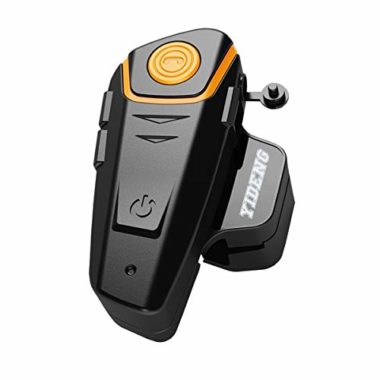
- Stand Out Features - Why We Love It
- Bluetooth 3.0 connection to walkie-talkies, radios, and music devices
- Supports a 2-rider intercom
- Features echo cancellation and noise suppression
- High definition audio and powerful functional design are great for the mountains
- Big push-button is easy to operate
- Entertaining and safe
Product Dimensions: 7.5 x 5.1 x 2.4 inches
Weight: 11.7 ounces
Headphone Fit: In-ear
Proofing: Water-resistant
App: No
Special Feature: Hands-free
Color: Black/Yellow
Outdoor Tech Wireless Chips 2.0
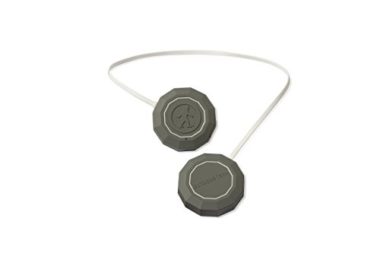
- Stand Out Features - Why We Love It
- Walkie-talkie capabilities
- Compatible with a variety of helmets
- Two-button interface is easy to use with ski gloves
- Bluetooth 4.0 has a 32-foot range
- 10 hours playtime for all day long use
- Sweat-resistant keeps them functioning in cold temperatures
Product Dimensions: 2 x 4 x 0.5 inches
Weight: 2.24 ounces
Headphone Fit: Wrap around
Proofing: Sweat-resistant
App: No
Special Feature: Walkie-talkie capability
Color: Grey/white
BE Headwear Bluetooth
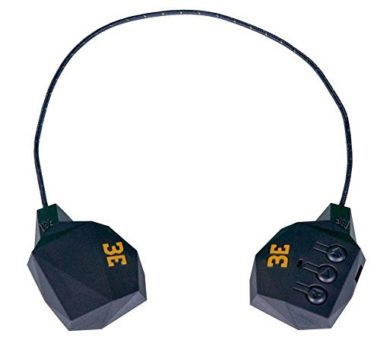
- Stand Out Features - Why We Love It
- Wireless design with long battery life
- A single charge can give you 9 hours of battery life
- BE-Link system uses Bluetooth technology
- Clear and loud audio
- Comfortable design stays in place
Product Dimensions: 7 x 2 x 7 inches
Weight: 0.64 ounces
Headphone Fit: Wrap-around
Proofing: Not specified
App: No
Special Feature: Helmet hook and loop mounts
Color: Black
iASUS XSound High Definition
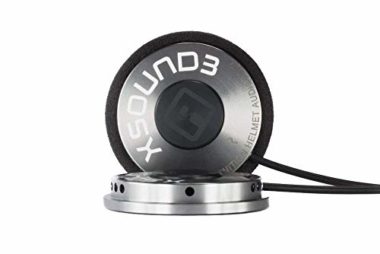
- Stand Out Features - Why We Love It
- Best on-ear sound quality
- Audio is loud and clear
- Lightweight aluminum chassis and Kevlar-reinforced wires are durable for ski terrain and conditions
- Custom fit is easy to mount in the helmet
- Foam pieces and pads provided for a custom fit and comfort
Product Dimensions: 5.7 x 5.7 x 1.3 inches
Weight: 4 ounces
Headphone Fit: Over-ear
Proofing: Not specified
App: No
Special Feature: Foam pieces and pads included
Color: Black/silver
Dreamruns Direct Connect
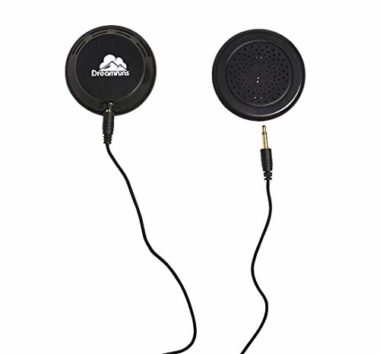
- Stand Out Features - Why We Love It
- Quality audio on a budget
- Awesome sound
- Small profile is compatible with different helmet designs
- Safe to use with a zipper or Velcro liners
- Durable braided speaker cable
- Stay connected with your buddies
Product Dimensions: 6.4 x 3 x 1.1 inches
Weight: 1.6 ounces
Headphone Fit: Over-ear
Proofing: Not specified
App: No
Special Feature: Braided speaker cable
Color: Black
How To Choose The Best Ski Helmet Headphones – Buying Guide
Design
There are many different aspects of design, including the type and style of skiing headphones, but we will review those in-depth later. The most important aspect of design overall for ski helmet earphones is a slim profile. Helmets are important for your safety, but it also means that you can’t use traditional headphones because they are too bulky.
Instead, a helmet with headphones uses small earbuds or headphones with a slim profile to deliver your favorite tunes. Parts of your headphones will have to easily tuck into the lining of your helmet for them to function. Without slim profile designs, skiers won’t be able to comfortably use their helmet and listen to music. The best ski helmet headphones will even have dedicated pockets for the earphones and wires, so they rest flat against your head.
Wired vs. Wireless
Headphones for under helmets can be both wired and wireless. Wired headphones will have an auxiliary cable that connects to your music playing device. Wireless helmet speakers will use Bluetooth technology to connect to your device but will still have a wire connecting both headphones. Bluetooth ski helmet speakers or wireless ski helmet speakers are ideal because they eliminate the chance of tangling your gear with audio cables.
Riders will have to choose which style of skiing headphones they want. Normally, the decision is based on personal choice, but you may want to consider audio quality too. Wired headphones have more clarity than Bluetooth helmet headphones because of a stable connection.
Noise Management
Helmet audio needs to have balanced noise management so that riders can hear their music but stay safe. The best headphones for helmets will have noise management that allows the music to be heard over the wind and snow but doesn’t have audio levels so high that you cannot hear instructions or possible warnings from other riders. Riders should keep their audio volume at a moderate level, which will ensure that they can still hear the slope activity.
Durability
Skiing is a rigorous activity, so all your gear needs to be durable. Even headphones for under ski helmets need to be durable in their design and construction. Helmet headphones that are durable will function for a long time and consistently deliver the best audio quality. With increased durability, riders can be assured they won’t need to invest in new skiing headphones every year.
However, riders should particularly focus on whether their headphones are water-resistant and the quality of the cables. When you ski, you may sweat, so to be on the safe side your Bluetooth headphones should be water-resistant. Additionally, you want durable cables that won’t twist or break from the first few uses. Headphone reviews are a great resource to determine how durable the design is from the experience of other buyers and can help you find the best ski helmet headphones.
Convenience
Skiers wouldn’t want to use ski or snowboard headphones if it was a great inconvenience to add them to a trip. Luckily, most top-rated headphones for helmets are extremely convenient to use. The helmet earphones can be easily tucked into the lining of your helmet and effortlessly connected to your music playing device by cable or Bluetooth. The most convenient design is a wireless helmet earphones because they eliminate the need for additional cables.
Safety
Safety is always the number one concern when you are on the slopes. You don’t want to be ill-equipped or have any accidents with other riders on the mountain. When you are listening to music, you may get into the rhythm of your turns but that’s no excuse to be unaware of your surroundings. Ski helmet audio should never be too loud.
Riders should not listen to their music at high levels because it drowns out the noise on the slope. If your music volume is too high, you’ll cut yourself off from communication with other riders, which can lead to accidents and collisions. By keeping the volume at a moderate level and finding headphones for under helmets that have good noise management, you can jam to your tunes, and still practice ski safety on the mountain.
Sound Quality
A big concern with skiing headphones is sound quality. Riders want clear audio that doesn’t skip as they race down the mountain. Top-rated headphones for helmets should have a decent sound quality that is suitable for rugged use. The helmet audio shouldn’t skip as they carve turns.
Bluetooth earphones will have clear audio but may not be as clear as a wired connection. Since the connection isn’t hard-wired, the audio will automatically have slightly lower quality, but most skiers, they will never notice a difference. Wired skiing headphones will have better quality because of the stable connection, but they may be prone to skipping with erratic movement, unlike wireless headphones.
Overall, the best Bluetooth headphones for helmets will have incredible sound quality that is clear and balanced. Whether you want to hassle with a cable or go wireless will be up to personal preference.
Weight
Riders have to carry their gear with them, so having lightweight equipment is important. Since skiing helmets with speakers are not required, riders don’t want to have to carry unnecessary extra weight. Top-rated headphones for helmets will have a lightweight design to ensure they can be easily carried without adding more strain to the rider.
You might also like: Top Ski Boots For Wide Feet
Type/Style
There are three common types or styles of skiing headphones, or snowboard helmet earphones, that are available on the market. Wrap around headphones, in-ear headphones, and over-ear headphones are the most popular designs.
Wrap around headphones are the most comfortable and have great sound quality, but they can be tricky to add to your helmet. These headphones will have a cable that wraps around your neck and connects the two earpieces. If you do choose this style, we suggest that you use a neck gaiter for a better fit.
In-ear headphones have a minimalistic, compact, and lightweight design, which is great for tucking them into your helmet. The in-ear pieces also stay flush to your ear, so no parts are rubbing or digging into your helmet. However, the downsides to in-ear headphones are that they may need frequent readjusting and can block out ambient noise, which is dangerous on the slopes.
Over-ear headphones are a less common style that is quickly gaining in popularity. These skiing headphones have a hook or loop that rests over the ear to secure the headphones in place. This style should rest rather flat next to your head, which makes them great as ski and snowboard helmet earphones because they won’t rub or dig into your head.
Compatibility with the Helmet
It is extremely important that your helmet earphones actually fit inside the helmet. Without helmet compatibility, you cannot safely listen to music on the slopes. Your skiing helmets with speakers should effortlessly incorporate the headphone into the lining so that they don’t dig in, rub, or chafe your sensitive skin.
FAQs
Q: How to put headphones in a ski helmet?
Adding your headphones to your helmet will depend on the type or style. Some helmet earphones can be tucked into the lining of the helmet using the band that connects the earpieces. Other headphones are more comfortable if you put them on regularly and then slip your helmet over your head. However, with wired headphones, you will need to comfortably position the cable so that it runs down your neck and to your device.
No matter how the headphones fit into your helmet, you want to be sure that they rest comfortably against your head and aren’t causing any discomfort. A helmet with headphones should always put comfort first.
Q: How to put wireless headphones in a ski helmet?
Most wireless helmet speakers will still use a wire to connect the two earpieces, but it won’t need a cable to connect to your device. Without the connecting cable, you can comfortably wear the earpieces as you would regularly. Before you put your helmet on, establish the Bluetooth connection to your device. Once your Bluetooth snow helmet speakers have been paired, you can put your helmet on and begin skiing.
Q: How do helmet speakers work?
A helmet with headphones works like any normal audio headphones to provide riders with music as they navigate the slopes. The headphones are placed inside your helmet and will connect to your device with either a wired cable or Bluetooth wireless technology. However, wireless helmet earphones are the most popular because they eliminate the chance of getting tangled in cables.
Q: Is it dangerous to ski with music playing?
It can be if you play your music too loudly. Top-rated headphones for helmets will have noise management, which balances the volume without eliminating ambient noise. Additionally, riders shouldn’t turn up the volume too much to ensure they can still hear instructions, warnings, and communicate with other riders. As always, staying alert of your surroundings and looking for other traffic can keep you safer on the slopes. Skiing helmets with speakers should never make it more dangerous on the slopes.
Globo Surf Overview
While there are a lot of health benefits of skiing, adding music by using ski helmet audio, can make your winter routine more fun. With your favorite tunes, you can time your turns and get into a good rhythm. But listening to music safely should be a top priority. With the best headphones for ski helmets, you can jam to the beat with the best audio and still feel comfortable. With our comprehensive guide and selection of the best ski helmet headphones, skiers can get a head start in their search.
More Snow Ski Gear Reviews:
- Ski Pants
- Cross Country Ski Gloves
- Skiing Books
- Backcountry Ski Bindings
- Women Ski Boots
- Cross Country Ski Boots
- Women’s Skis
- Watches For Skiing
- Ski And Snowboard Tuning Vises
- Ski And Snowboard Wall Racks
- Kids Ski Helmets
- Ski Gloves For Kids
- Photochromic Ski Goggles
- Ski Boots For Kids
- Kids Ski Poles
- Ski Boots For Narrow Feet
Do you own a pair of the helmet speakers that made it onto our list? Do you love jamming to music on the slopes? Let us know how your snow helmet speakers have enhanced your time on the mountain in the comments section below.



